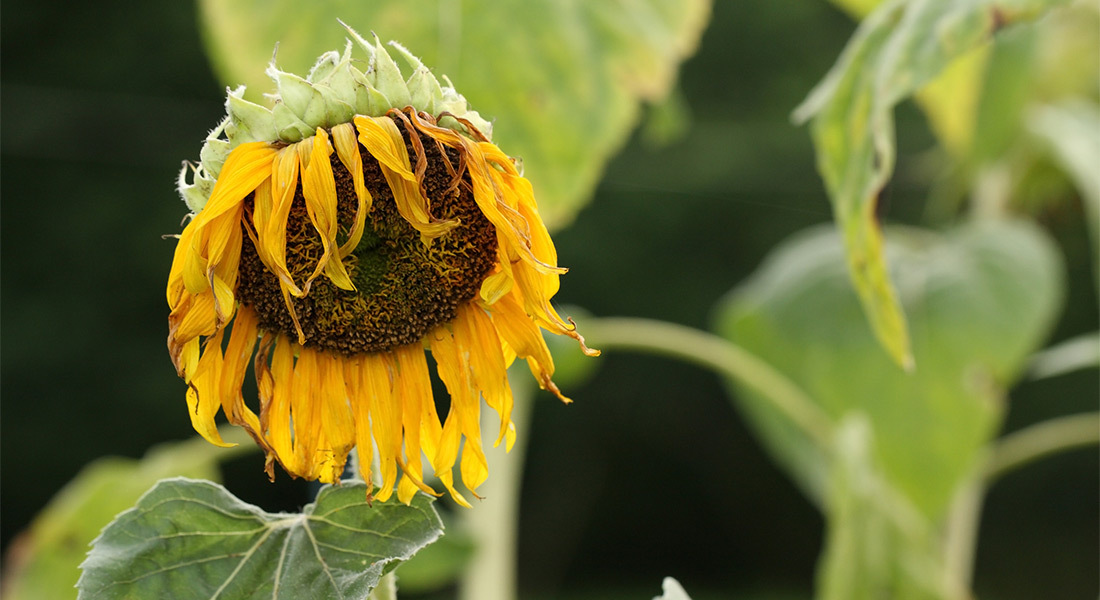How do I protect my plants from heat stress?

Over the past few years, we’ve been experiencing stretches of hotter-than-normal temperatures during the summer. Staying on top of the watering is crucial, but even when you do that, you can still end up with plants that wilt or leaves that turn yellow. Here are some ideas for helping your plants beat the heat when the thermometer goes into the red zone.
Hit the right balance when watering — Watering during times of heat stress is a balancing act. Water too much and you can damage your plants. Water too little and your plants will be thirsty — and they’ll show you. The trick is to water just the right amount so your plants can weather the hot, hot, hot weather.
- Water correctly. Start by watering in the early morning or early evening, before things really heat up. Watering during the mid-day sun is inefficient and the bulk of the water will evaporate before it gets to the plants’ roots
- Go deep. Rather than watering a little each day, give your plants a deep watering three times a week. The best way to do this is via a drip irrigation system or a soaker hose. If you don’t have an irrigation system, no worries — hand-watering or using a sprinkler will work too. Just be sure and use them in the cooler early morning or early evening hours.
- There is too much of a good thing. Too much water can damage your plants just as much as under-watering can. When plants are overwatered, their roots are deprived of oxygen. This promotes the growth of fungi in the soil, leading to root rot. So if you know you’ve been deep-watering your plants several times each week, don’t panic if they look a little droopy during the hottest times of the day. As long as you’ve been sticking to your deep-watering regimen, your plants will bounce back when the sun goes down.
Add mulch to create a layer of insulation — A thick layer of mulch helps insulate the plants roots from the summer heat and winter cold. It also helps keep the soil moist. If your garden gets a lot of direct sunlight and is prone to extreme temperatures, add 4-6 inches of mulch. Don’t be shy — lay it on thick — with things like leaves, grass clippings, pine needles or even straw. Our Rogue Fine Compost is great for this too. It not only works as an excellent mulch, it provides the added benefit of constantly leaching nutrients into the soil below.
Use some kind of shade cover to prevent sunburn — During times of extreme heat, plants will stop flowering and can get sunburned. The leaves of a sun-damaged plant turn white. Here are some options for proving a bit of cover from the burning sun:
- Make your own shade. Garden fabric creates excellent protection against the sun for your plants. Typical garden fabric is light enough to be draped directly over your plants. For tomatoes and other plants that are more delicate, use support hoops to keep the fabric off the plants.
- String a shade sail. If you have a larger area to cover — maybe between a large tree and your house, for example — consider using a shade sail to create shade for the nearby plants.
- Use what you already have. You can also use items you typically have around the house, such as stakes, metal frames and old bed sheets. Put the stakes around your plants and make sure the sheet hovers a few inches above the plants so it doesn’t damage them.
- Create a shade “greenhouse.” Window screen fabric and a plastic, wood or metal frame can be used to create an open greenhouse that provides some much-needed shade to the plants inside the perimeter. If you have access to actual old window screens, they can do the trick too.
Don’t forget your potted and hanging plants — The bad news is that plants planted in containers dry out faster than plants planted in the soil. The good news is that unlike those plants in the ground, container plants can be moved. When the weather forecast calls for high temperatures, move your potted and hanging plants to a shadier part of the yard. And remember to check them each morning to make sure they are moist, and water accordingly.
Select plants that thrive in the sun — When it’s time to add to your garden or replace plants, if the area they’re going into is in full-sun, look for specific plants that can tolerate the extra heat. Cosmos, geraniums, marigolds, lantana, lemon verbena, penstemon, salvias, sedum and wax begonias are all heat-tolerant plants that love the sun.
Share This
